Woodpeckers are a group of specialized birds known for their unique adaptations, including their strong beaks and drumming behavior. They belong to the family Picidae, which includes more than 200 species worldwide. Here is some information about woodpeckers:
Physical Characteristics: Woodpeckers generally have a stocky body with a strong neck and sturdy legs. They are characterized by their chisel-like, pointed beaks, which are well adapted for drilling into wood. Most woodpeckers have zygodactyl feet, meaning they have two toes facing forward and two toes facing backward. This foot arrangement provides a strong grip on tree trunks and branches, enabling them to cling to vertical surfaces easily.
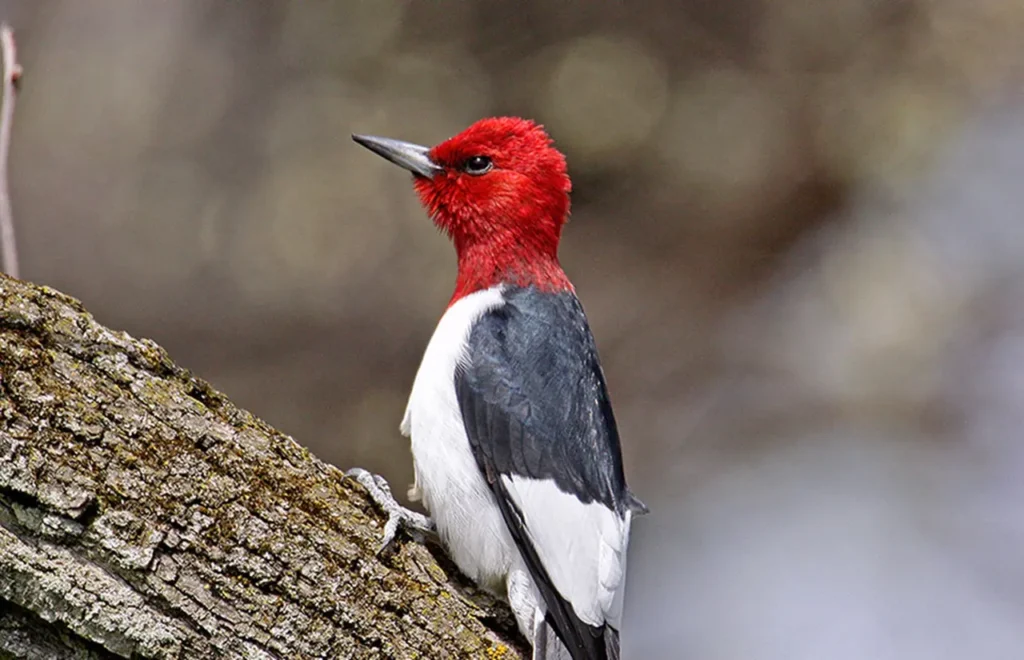
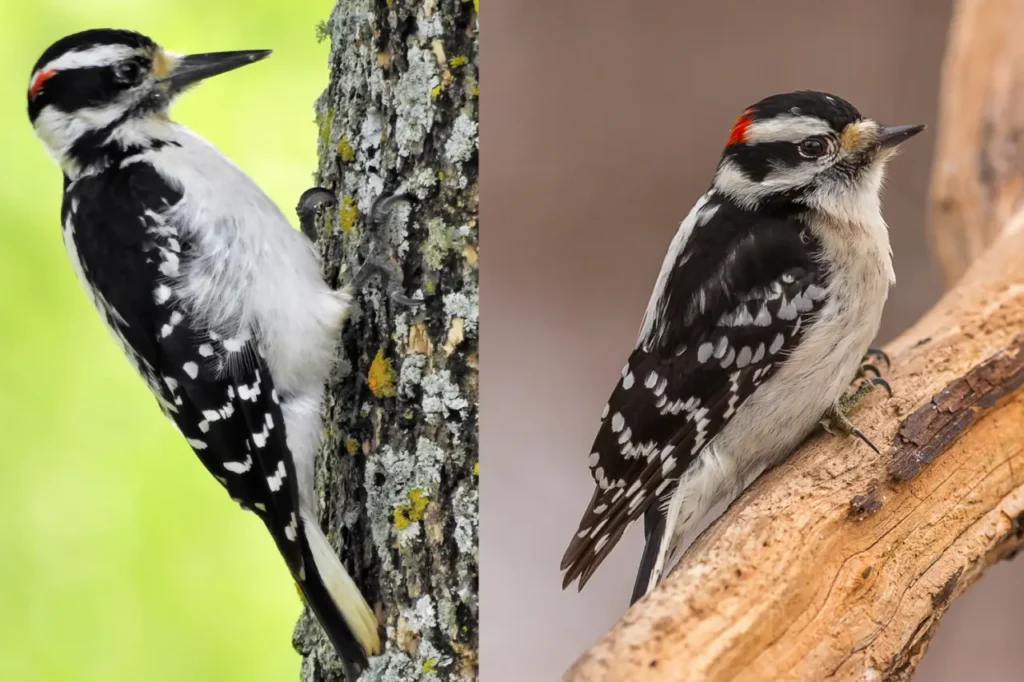
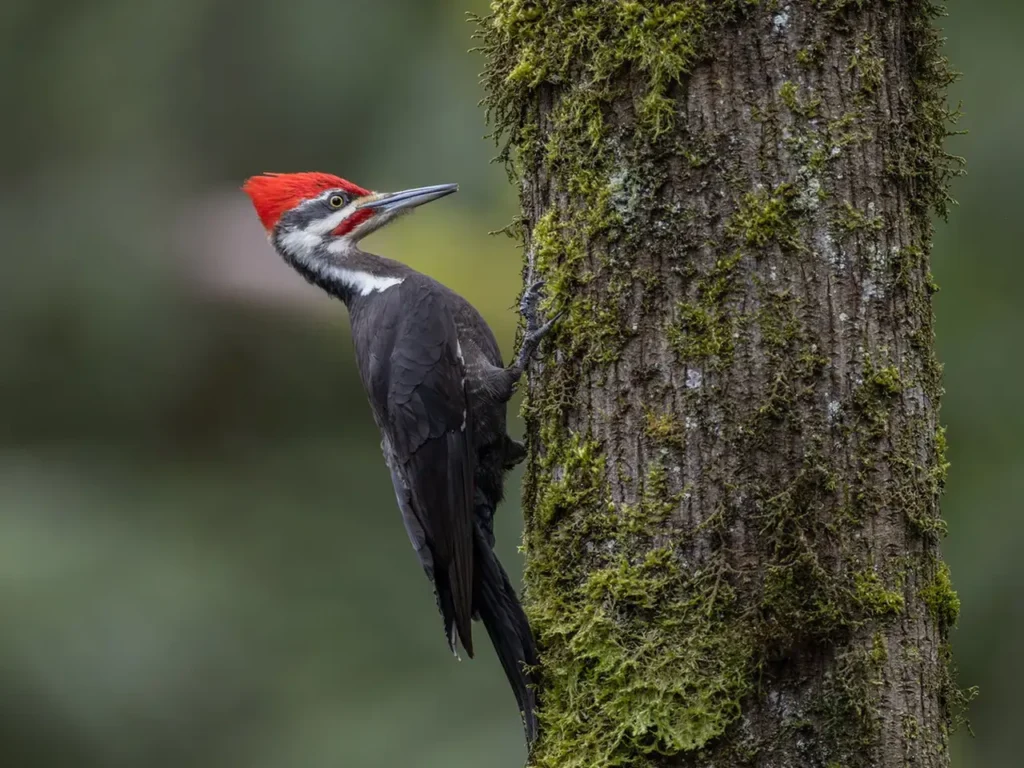
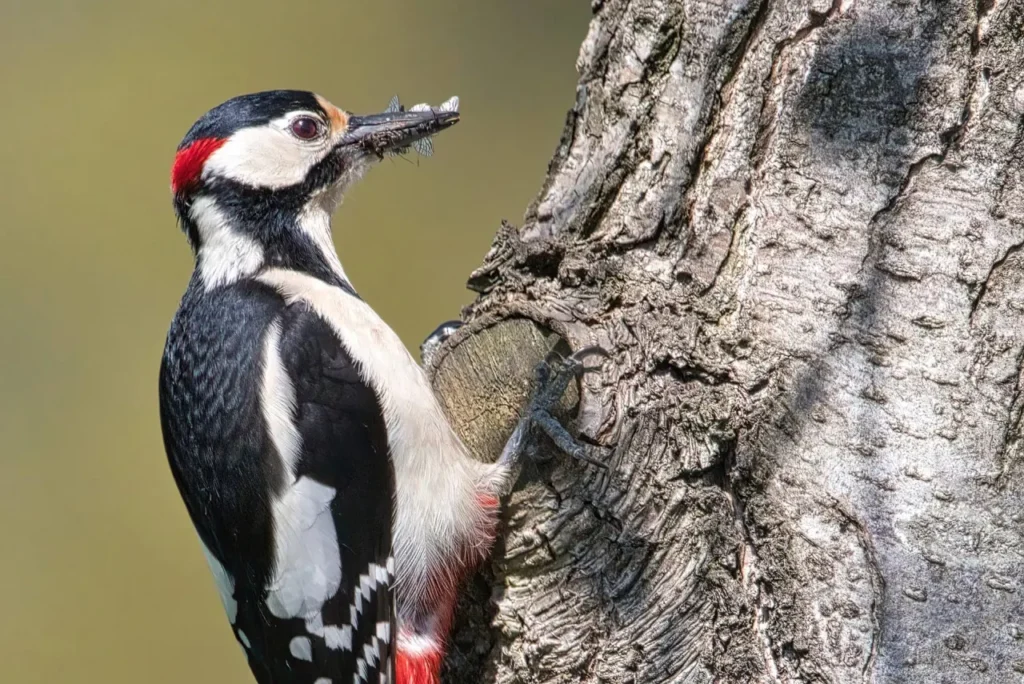
Feeding Habits: Woodpeckers are primarily insectivorous, meaning they feed on insects and their larvae found within tree bark and wood. Using their sharp beaks, they drill holes into the wood to access their prey. Some woodpecker species also feed on fruits, nuts, and sap. The ability to find insects by “drumming” on wood is a unique behavior seen in woodpeckers.
Drumming and Communication: Woodpeckers are known for their rhythmic drumming, which involves rapidly pecking on wood surfaces to create a series of loud, repetitive sounds. This behavior serves multiple purposes, including communication with other woodpeckers, establishing territory, attracting mates, and locating insects beneath the bark. The drumming can vary between species and individuals, allowing other woodpeckers to recognize and identify one another.
Nesting and Reproduction: Woodpeckers typically excavate nest holes in tree trunks to lay their eggs and raise their young. These nest holes are often reused in subsequent years and can also provide shelter for other small birds and animals. Both males and females participate in excavating the nest cavity and caring for the chicks.
Conservation: Woodpeckers face various conservation challenges, primarily related to habitat loss and fragmentation. The destruction of natural woodlands and the removal of dead or decaying trees can impact their nesting sites and food sources. Some woodpecker species are also susceptible to collisions with vehicles and structures, such as buildings and utility poles. Conservation efforts aim to protect and restore their habitats, including preserving mature trees and deadwood for nesting and foraging.
Notable Species: Some well-known woodpecker species include the Northern Flicker (Colaptes auratus) in North America, the Great Spotted Woodpecker (Dendrocopos major) in Europe, the Red-headed Woodpecker (Melanerpes erythrocephalus) in North America, the Green Woodpecker (Picus viridis) in Europe, and the Pileated Woodpecker (Dryocopus pileatus) in North America.
In conclusion, woodpeckers are fascinating birds with specialized adaptations for drilling into wood and finding insects. Their drumming behavior and unique vocalizations make them easily identifiable in their habitats. Woodpeckers play a crucial role in forest ecosystems by controlling insect populations and creating nesting opportunities for other cavity-nesting birds and animals.
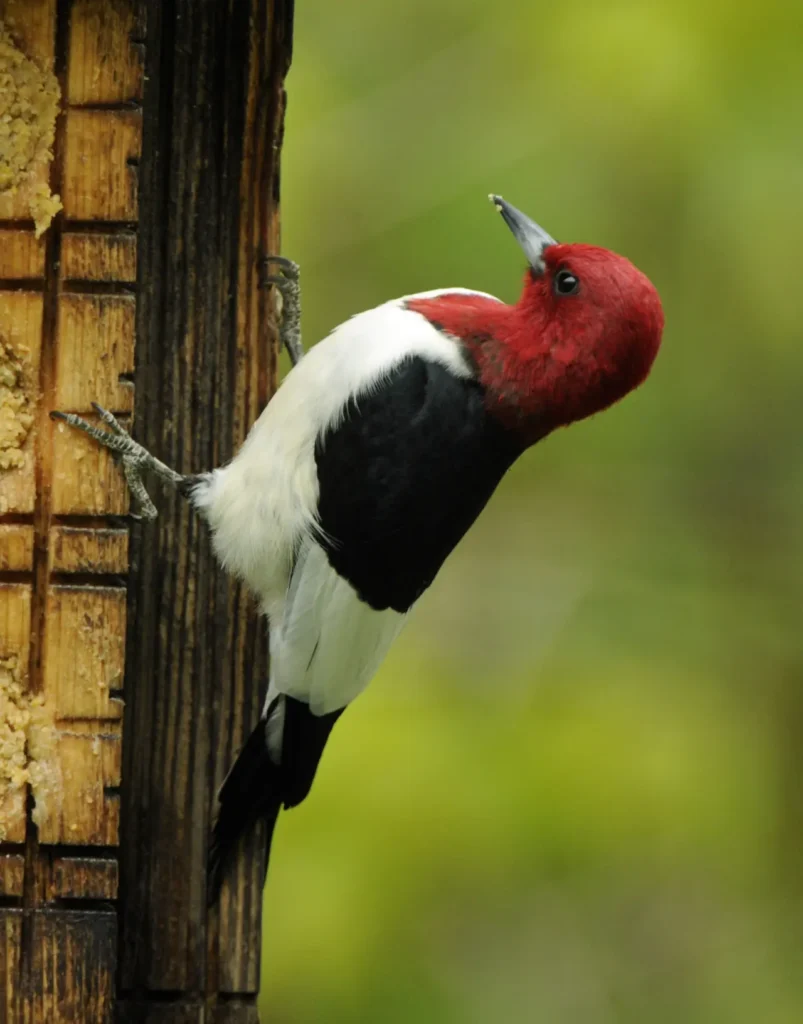
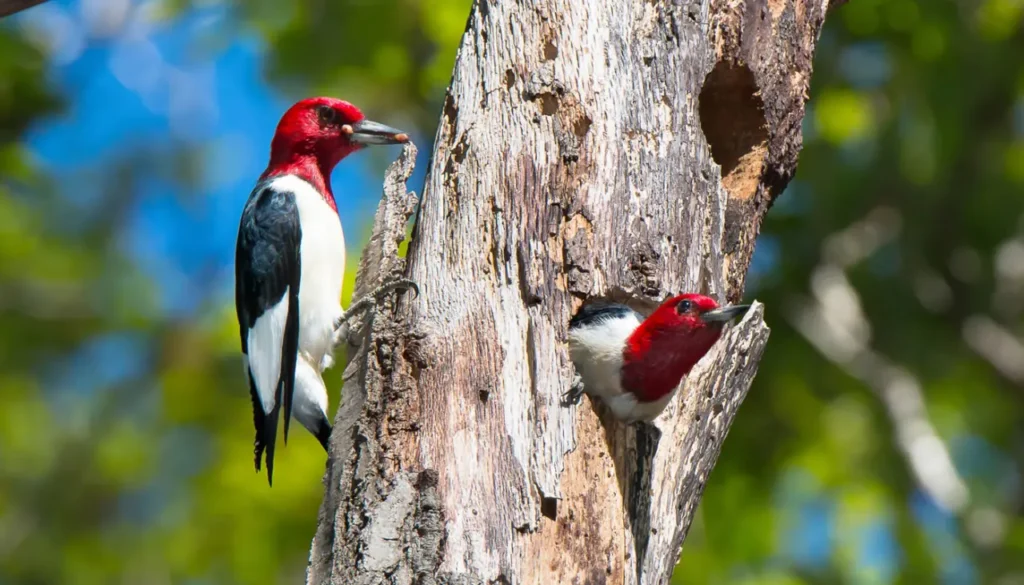
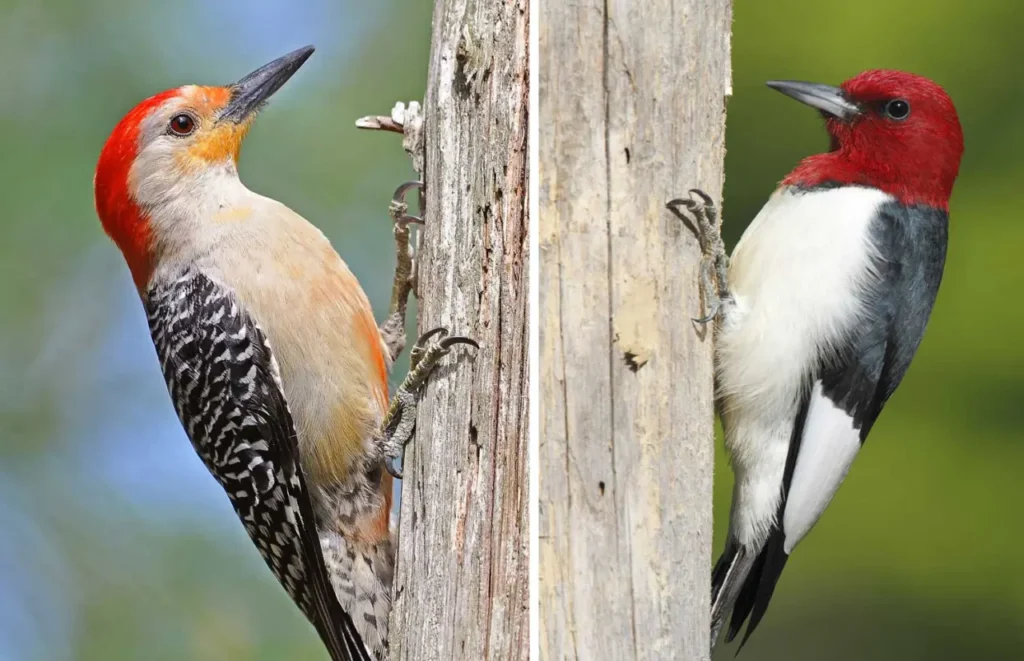
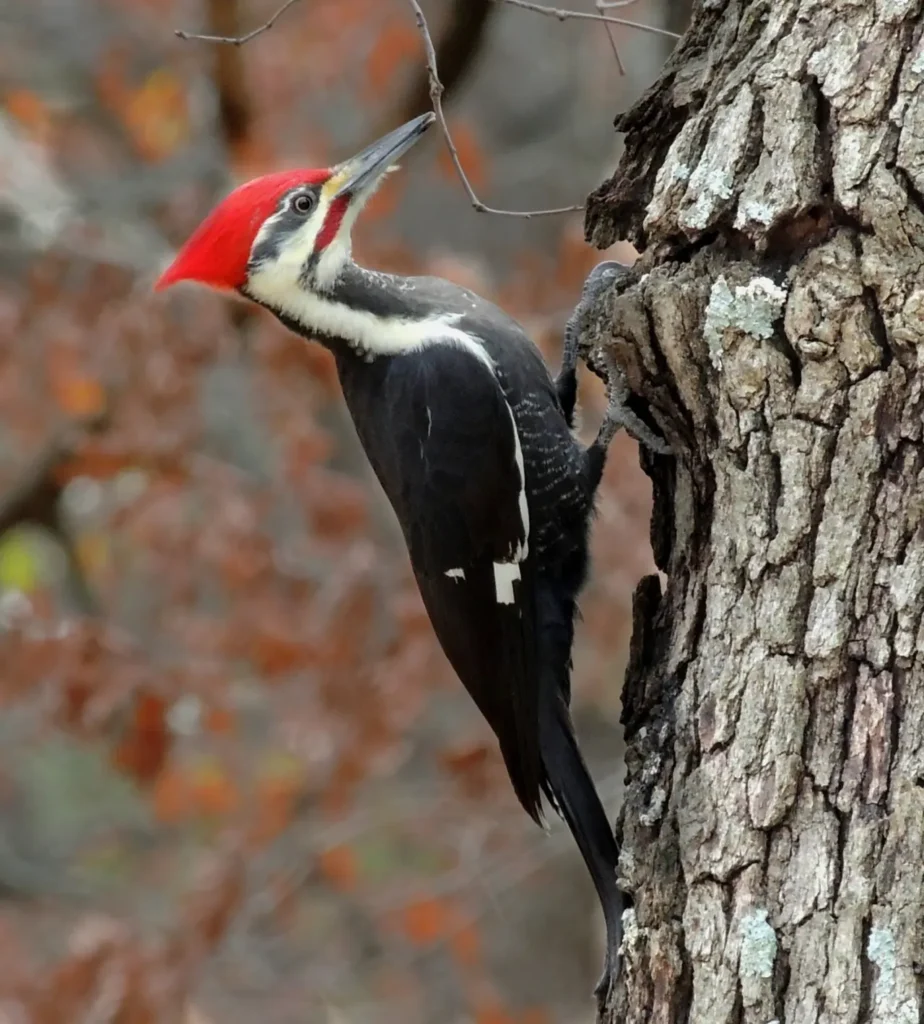
Types of Woodpeckers
There are numerous species of woodpeckers found across the world, each with its unique characteristics and habitats. Here are some notable types of woodpeckers:
- Downy Woodpecker (Picoides pubescens): A small-sized woodpecker commonly found in North America. It has a black and white pattern, with a small bill and a white patch on its back.
- Hairy Woodpecker (Picoides villosus): Similar in appearance to the Downy Woodpecker, but larger in size. It has a black and white pattern with a longer bill.
- Northern Flicker (Colaptes auratus): Also known as the Yellowhammer, it is a medium-sized woodpecker found in North America. It has a brown body with black bars and a prominent white rump. The undersides of its wings and tail feathers are yellow.
- Pileated Woodpecker (Dryocopus pileatus): One of the largest woodpeckers in North America, known for its striking appearance. It has a black body, a red crest on its head, and a white stripe on its face.
- Red-headed Woodpecker (Melanerpes erythrocephalus): This medium-sized woodpecker has a bright red head and neck, a black back, and white underparts. It is found in parts of North America.
- Red-bellied Woodpecker (Melanerpes carolinus): Found in North America, this woodpecker has a pale red belly, a red cap on its head, and a black-and-white striped back.
- Great Spotted Woodpecker (Dendrocopos major): Common in Europe and parts of Asia, it has a black and white pattern with a red patch on its lower belly. The male has a red patch on the back of its head.
- Green Woodpecker (Picus viridis): Found in Europe, this woodpecker has a green back, yellow-green underparts, and a red crown on its head. It is known for its distinctive “yaffle” call.
- Black-backed Woodpecker (Picoides arcticus): Found in North America, primarily in boreal forests. It has a black back, white underparts, and a white stripe running down its back.
- Acorn Woodpecker (Melanerpes formicivorus): Native to North and Central America, it has a black body, a white face, and a red crown. It is known for storing acorns in specially created granaries.
- Yellow-bellied Sapsucker (Sphyrapicus varius): Found in North America, this woodpecker has a black and white pattern with a yellow belly. It is known for its habit of drilling sap wells in trees and feeding on the sap and insects attracted to it.
- Lewis’s Woodpecker (Melanerpes lewis): Native to western North America, it has a unique appearance with a dark greenish-black body, pinkish-red face and throat, and a gray collar. It is known for its acrobatic flight style.
- Three-toed Woodpecker (Picoides tridactylus): Found in boreal forests of North America and Eurasia, it has a black and white pattern and, as the name suggests, only three toes instead of four like most woodpeckers.
- Golden-fronted Woodpecker (Melanerpes aurifrons): Native to parts of the southwestern United States and Mexico, it has a black and white pattern with a golden-yellow nape and forehead.
- White-headed Woodpecker (Picoides albolarvatus): Found in western North America, it has a black body, white head, and a prominent white patch on its wings.
- Crimson-bellied Woodpecker (Campephilus haematogaster): Native to the Amazon rainforest in South America, it has a mostly black body with a red crown, white stripes on the face, and a red belly.
- Speckle-breasted Woodpecker (Dendrocopos analis): Found in Southeast Asia, it has a black and white pattern with a speckled breast and a red crown.
- Pale-headed Woodpecker (Gecinulus grantia): Native to Southeast Asia, it has a black and white pattern with a pale yellowish head and a red crown.
- Grey-headed Woodpecker (Picus canus): Found in parts of Europe and Asia, it has a grayish-black body, a gray head, and a distinctive red cap on its nape.
- Rufous Woodpecker (Micropternus brachyurus): Native to the Indian subcontinent and Southeast Asia, it has a black and white pattern with a rufous (reddish-brown) belly.
- Red-cockaded Woodpecker (Picoides borealis): Found in the southeastern United States, it has a black and white pattern with a small red patch on the sides of its head. It is known for its cooperative breeding behavior and its preference for living in old-growth pine forests.
- Nuttall’s Woodpecker (Picoides nuttallii): Native to California and parts of western North America, it has a black and white pattern with a red crown on the male. It is often found in oak woodlands.
- Williamson’s Sapsucker (Sphyrapicus thyroideus): Found in western North America, it has a black and white pattern with a red throat patch on the male and a yellow belly on the female. It is known for creating sap wells and foraging on sap and insects.
- Red-bellied Woodpecker (Melanerpes carolinus): Found in eastern North America, it has a grayish-brown back, a red cap, and a red patch on its belly. Despite its name, the red belly patch is often not visible.
- White-backed Woodpecker (Dendrocopos leucotos): Native to Eurasia, it has a black and white pattern with a white back and white wings. It is known for its distinctive call and its preference for coniferous and mixed forests.
- Red-naped Sapsucker (Sphyrapicus nuchalis): Found in western North America, it has a black and white pattern with a red nape on the male and a white nape on the female. It is known for its sap wells and foraging behavior.
- Black Woodpecker (Dryocopus martius): Native to Eurasia, it has an all-black body with a red crown on the male. It is the largest woodpecker species in Eurasia and is often associated with old-growth forests.
- Grey-capped Woodpecker (Dendrocopos canicapillus): Found in parts of Asia, it has a grayish-brown back, a gray cap, and a white stripe on its face. It is often seen in forests and wooded areas.
- Magellanic Woodpecker (Campephilus magellanicus): Native to southern South America, it has a black body, a red crown, and white stripes on its face. It is one of the largest woodpecker species in South America.
- White-headed Woodpecker (Leuconotopicus albolarvatus): Found in western North America, it has a black and white pattern with a white head and a black back. It is known for its association with pine forests.
- Golden-crowned Woodpecker (Melanerpes chrysogenys): Native to Mexico and Central America, it has a black and white pattern with a golden-yellow crown on the male and a black crown on the female.
- Brown-headed Woodpecker (Picus erythropygius): Found in parts of Southeast Asia, it has a brown head, a black and white pattern on its body, and a red patch on its belly.
- Black-cheeked Woodpecker (Melanerpes pucherani): Native to Central America, it has a black and white pattern with a red crown, a black cheek patch, and a white throat.
- Lineated Woodpecker (Dryocopus lineatus): Found in the Americas, it has a black and white pattern with a prominent red crest and a black line running down its throat.
- Rufous-breasted Piculet (Sasia africana): Native to South and Southeast Asia, it has a brown back, a rufous breast, and a distinctive black and white head pattern.
- Smoky-brown Woodpecker (Picoides fumigatus): Found in Southeast Asia, it has a smoky-brown body with a black and white pattern, and a red crown on the male.
- Cuban Green Woodpecker (Xiphidiopicus percussus): Native to Cuba, it has a greenish-black body, a red crown, and a white stripe running from the base of the bill to the neck.
- Yellow-bellied Woodpecker (Veniliornis dignus): Found in South America, it has a black and white pattern with a yellow belly and a red crown on the male.
- White-bellied Woodpecker (Dryocopus javensis): Native to Southeast Asia, it has a black and white pattern with a white belly and a red crest on the male.
- Scaled Piculet (Picumnus squamulatus): Found in South and Central America, it has a brown body with scaled patterns, a black and white face, and a red crown on the male.
- Black-backed Woodpecker (Picoides arcticus): Found in North America, it has a black back, a white belly, and a black and white pattern on its wings and head. It is often associated with burned or dead trees.
- Spot-breasted Woodpecker (Colaptes punctigula): Native to Central and South America, it has a brownish back, a white belly, and a spotted breast. It is known for its distinctive call and its preference for forest edges and open woodlands.
- Gila Woodpecker (Melanerpes uropygialis): Found in the southwestern United States and Mexico, it has a grayish-brown back, a pale belly, and a red cap on the male. It is often seen foraging on cacti.
- Ladder-backed Woodpecker (Picoides scalaris): Native to North and Central America, it has a black and white pattern with a ladder-like pattern on its back. It is often found in desert habitats.
- White Woodpecker (Melanerpes candidus): Found in Central America, it has a white body with black wings and a red cap on the male. It is known for its unique call and its preference for open woodlands and forest edges.
- Middle Spotted Woodpecker (Dendrocoptes medius): Native to parts of Europe and Asia, it has a black and white pattern with a red crown on the male. It is often found in deciduous and mixed forests.
- Green-backed Woodpecker (Picus canus): Found in parts of Europe and Asia, it has a greenish-black back, a white belly, and a red cap on the male. It is known for its drumming behavior and its preference for woodland habitats.
- Gray-crowned Woodpecker (Colaptes auricularis): Native to Central and South America, it has a grayish-brown back, a pale belly, and a gray crown on the male. It is often seen in open habitats and forest edges.
- Crimson-backed Woodpecker (Chrysocolaptes lucidus): Found in Southeast Asia, it has a black and white pattern with a crimson-red back and a black crown on the male. It is known for its loud calls and its preference for primary and secondary forests.
- Buff-spotted Woodpecker (Campethera nivosa): Native to sub-Saharan Africa, it has a brownish back, a white belly, and buff-colored spots on its wings. It is often found in woodlands and savannahs.
- Greater Spotted Woodpecker (Dendrocopos major): Found in Europe and parts of Asia, it has a black and white pattern with a red vent on the male. It is known for its drumming behavior and its preference for deciduous and mixed forests.
- Black-rumped Flameback (Dinopium benghalense): Native to South and Southeast Asia, it has a black back, a golden-yellow body, and a black and white pattern on its wings. It is often seen in wooded habitats, gardens, and plantations.
- Rufous Woodpecker (Micropternus brachyurus): Found in South and Southeast Asia, it has a brownish back, a rufous underbelly, and a black and white pattern on its wings. It is known for its distinctive call and its preference for forests and woodlands.
- Lesser Spotted Woodpecker (Dryobates minor): Native to Europe and parts of Asia, it has a black and white pattern with a red crown on the male. It is often found in deciduous forests and woodland edges.
- Checkered Woodpecker (Veniliornis mixtus): Found in South America, it has a black and white pattern with a red crown on the male. It is known for its distinctive checkered pattern on its back and its preference for forested habitats.
- Rufous-headed Woodpecker (Celeus spectabilis): Native to Central and South America, it has a black and white pattern with a rufous head on the male. It is often found in humid forests and forest edges.
- Grey-headed Woodpecker (Picus canus): Found in parts of Europe and Asia, it has a gray head, a black and white pattern on its body, and a red cap on the male. It is known for its drumming behavior and its preference for forested habitats.
- Red-crowned Woodpecker (Melanerpes rubricapillus): Native to Central and South America, it has a black and white pattern with a red crown on the male. It is often seen in open woodlands, gardens, and plantations.
- Hairy Woodpecker (Picoides villosus): Found in North America, it has a black and white pattern with a larger size compared to other woodpecker species. It is often found in mature forests and woodland areas.
- White-naped Woodpecker (Chrysocolaptes festivus): Native to Southeast Asia, it has a black and white pattern with a white nape on the male. It is known for its loud calls and its preference for primary and secondary forests.
- Downy Woodpecker (Picoides pubescens): Found in North America, it has a black and white pattern with a small size. It is often found in a variety of habitats, including woodlands, parks, and gardens.
- Great Spotted Woodpecker (Dendrocopos major): Native to Europe and parts of Asia, it has a black and white pattern with a red vent on the male. It is known for its drumming behavior and its preference for deciduous and mixed forests.
- White-headed Woodpecker (Picoides albolarvatus): Found in western North America, it has a black and white pattern with a white head and a black body. It is often associated with pine forests and coniferous woodlands.
- Cuban Green Woodpecker (Xiphidiopicus percussus): Native to Cuba, it has a greenish-black body, a red crown, and a white stripe running from the base of the bill to the neck. It is known for its distinctive calls and its preference for wooded areas.
- Ladder-backed Woodpecker (Picoides scalaris): Found in North and Central America, it has a black and white pattern with a ladder-like pattern on its back. It is often found in desert habitats and open woodlands.
- Syrian Woodpecker (Dendrocopos syriacus): Native to parts of Europe and Asia, it has a black and white pattern with a red crown on the male. It is known for its drumming behavior and its preference for wooded areas and gardens.
- White Woodpecker (Melanerpes candidus): Found in Central America, it has a white body with black wings and a red cap on the male. It is often seen in open woodlands, forest edges, and gardens.
- Red-headed Woodpecker (Melanerpes erythrocephalus): Native to North America, it has a striking red head, a black body, and white wing patches. It is known for its acrobatic flight and its preference for open woodlands and forest edges.
- Yellow-bellied Sapsucker (Sphyrapicus varius): Found in North America, it has a black and white pattern with a yellow belly on the male. It is known for its sap-drilling behavior and its preference for deciduous forests.
- Magellanic Woodpecker (Campephilus magellanicus): Native to parts of South America, it has a black and white pattern with a red crown on the male. It is one of the largest woodpecker species and is known for its strong drumming sounds.
- Eurasian Three-toed Woodpecker (Picoides tridactylus): Found in Europe and Asia, it has a black and white pattern with only three toes on each foot. It is known for its ability to cling to tree trunks and its preference for boreal forests.
- Crimson-bellied Woodpecker (Campephilus haematogaster): Native to South America, it has a black and white pattern with a crimson-red belly on the male. It is known for its powerful drumming and its preference for mature forests.
- White-backed Woodpecker (Dendrocopos leucotos): Found in Europe and parts of Asia, it has a black and white pattern with a white back on the male. It is known for its drumming behavior and its preference for coniferous forests.
- Acorn Woodpecker (Melanerpes formicivorus): Native to North and Central America, it has a black and white pattern with a red cap on the male. It is known for its communal nesting behavior and its habit of storing acorns in tree cavities.
- Rufous-bellied Woodpecker (Dendrocopos hyperythrus): Found in parts of Asia, it has a black and white pattern with a rufous underbelly on the male. It is often found in broadleaf forests and bamboo thickets.
- Lewis’s Woodpecker (Melanerpes lewis): Native to western North America, it has a unique plumage with a pinkish-red belly, a dark green back, and a gray collar. It is known for its flycatcher-like feeding behavior and its preference for burned or dead trees.
- Stripe-breasted Woodpecker (Picus viridanus): Found in Southeast Asia, it has a black and white pattern with a red crown on the male. It is often seen in forests, plantations, and gardens.
- Rufous-winged Woodpecker (Piculus simplex): Native to South America, it has a black and white pattern with rufous-colored wings on the male. It is known for its distinctive calls and its preference for lowland forests.
- Grey-faced Woodpecker (Picus canus): Found in parts of Asia, it has a gray face, a black and white pattern on its body, and a red cap on the male. It is often seen in forested habitats and gardens.
- Grey-and-buff Woodpecker (Hemicircus concretus): Native to Southeast Asia, it has a gray and buff-colored body with a distinctive pattern of black and white on its wings. It is known for its unique nesting habits and its preference for wooded habitats.
- Green Woodpecker (Picus viridis): Found in Europe, Asia, and parts of North Africa, it has a green back, a yellowish-green rump, and a red cap on the male. It is known for its distinctive laughing call and its preference for open woodlands and parklands.
- Golden-fronted Woodpecker (Melanerpes aurifrons): Native to North and Central America, it has a golden-yellow forehead, a black and white pattern on its body, and a red cap on the male. It is often found in arid and semi-arid regions, including deserts and scrublands.
- Black Woodpecker (Dryocopus martius): Found in Europe and parts of Asia, it has a black body, a red crown on the male, and a distinctive ivory-colored bill. It is known for its loud drumming and its preference for mature and old-growth forests.
- Helmeted Woodpecker (Dryocopus galeatus): Native to South America, it has a black body, a red crest on the male, and a prominent white helmet-shaped patch on the back of its head. It is known for its slow, rhythmic drumming and its preference for tall Araucaria forests.
- Pale-headed Woodpecker (Gecinulus grantia): Found in Southeast Asia, it has a black and white pattern with a pale yellowish head on the male. It is often seen in lowland and foothill forests, including bamboo and secondary forests.
- Buff-spotted Flameback (Dinopium rafflesii): Native to Southeast Asia, it has a black and white pattern with buff-colored spots on its wings. It is known for its distinctive call and its preference for forested habitats and gardens.
- Yellow-tufted Woodpecker (Melanerpes cruentatus): Found in Central and South America, it has a black and white pattern with a bright yellow tuft of feathers on the male. It is often seen in tropical forests and wooded areas.
- Grey-headed Woodpecker (Picus canus): Native to Europe and parts of Asia, it has a gray head, a black and white pattern on its body, and a red cap on the male. It is known for its drumming behavior and its preference for forested habitats.
- Yellow-bellied Woodpecker (Veniliornis dignus): Found in South America, it has a black and white pattern with a yellow belly on the male. It is often seen in forested habitats, including both primary and secondary forests.
- Crimson-backed Woodpecker (Chrysocolaptes lucidus): Native to Southeast Asia, it has a black and white pattern with a crimson-red back on the male. It is known for its loud calls and its preference for primary and secondary forests.
- Red-crowned Woodpecker (Melanerpes rubricapillus): Found in Central America, it has a black and white pattern with a red crown on the male. It is known for its acrobatic foraging behavior and its preference for forested habitats.
- Ladder-backed Woodpecker (Picoides scalaris): Native to North and Central America, it has a black and white pattern with a ladder-like pattern on its back. It is often found in desert regions and arid woodlands.
- Smoky-brown Woodpecker (Picoides fumigatus): Found in parts of North and Central America, it has a smoky-brown coloration with a black and white pattern. It is known for its rapid drumming and its preference for pine and oak forests.
- Buff-necked Woodpecker (Meiglyptes tukki): Native to Southeast Asia, it has a buff-colored neck, a black and white pattern on its body, and a red cap on the male. It is often seen in lowland rainforests and mangrove habitats.
- Rufous Woodpecker (Micropternus brachyurus): Found in parts of South Asia, it has a rufous coloration with a black and white pattern on its body. It is known for its distinctive calls and its preference for wooded habitats.
- Golden-olive Woodpecker (Colaptes rubiginosus): Native to South America, it has a golden-olive coloration with a black and white pattern on its body. It is often found in forested habitats, including both lowland and montane forests.
- Red-rumped Woodpecker (Veniliornis kirkii): Found in South America, it has a black and white pattern with a red rump on the male. It is known for its rapid drumming and its preference for tropical and subtropical forests.
- Magellanic Woodpecker (Campephilus magellanicus): Native to southern South America, it has a black and white pattern with a red crest on the male. It is known for its powerful drumming and its preference for old-growth forests.
- Great Slaty Woodpecker (Mulleripicus pulverulentus): Found in Southeast Asia, it is the largest species of woodpecker. It has a black and white pattern with a distinctive red crown on the male. It is often seen in primary and secondary forests.
- Greater Flameback (Chrysocolaptes guttacristatus): Native to Southeast Asia, it has a black and white pattern with a red crest on the male. It is known for its loud calls and its preference for forested habitats.
- Black-cheeked Woodpecker (Melanerpes pucherani): Found in Central and South America, it has a black and white pattern with distinctive black cheek patches. It is known for its loud calls and its preference for wooded habitats.
- Hairy Woodpecker (Picoides villosus): Native to North America, it has a black and white pattern with a longer bill and larger size compared to the Downy Woodpecker. It is often found in forests and woodlands.
- Cuban Green Woodpecker (Xiphidiopicus percussus): Found in Cuba, it has a greenish coloration with a black and white pattern on its body. It is known for its drumming behavior and its preference for forests and wooded areas.
- Crimson-crested Woodpecker (Campephilus melanoleucos): Native to South America, it has a black and white pattern with a red crest on the male. It is often seen in forested habitats, including both lowland and montane forests.
- Stripe-breasted Woodpecker (Picus virgatus): Found in Southeast Asia, it has a black and white pattern with distinctive stripes on its breast. It is known for its drumming and call notes and its preference for forested habitats.
- Golden-backed Woodpecker (Dinopium javanense): Native to Southeast Asia, it has a black and white pattern with a golden-yellow back on the male. It is often seen in various forested habitats, including both primary and secondary forests.
- Lewis’s Woodpecker (Melanerpes lewis): Found in western North America, it has a black and gray coloration with a pinkish-red belly. It is known for its unique flight style and its preference for open woodlands and burned forests.
- White-headed Woodpecker (Picoides albolarvatus): Native to western North America, it has a black and white pattern with a distinctive white head on the male. It is often found in coniferous forests and mixed woodlands.
- Checker-throated Woodpecker (Picus mentalis): Found in Southeast Asia, it has a black and white pattern with a checkered throat on the male. It is known for its drumming behavior and its preference for various forested habitats.
- Rufous-bellied Woodpecker (Dendrocopos hyperythrus): Native to South Asia, it has a black and white pattern with a rufous belly on the male. It is often seen in forested habitats, including both lowland and montane forests.
- Eurasian Three-toed Woodpecker (Picoides tridactylus): Found in Europe and parts of Asia, it has a black and white pattern with only three toes instead of the usual four. It is known for its distinctive call and its preference for coniferous forests.
- Black Woodpecker (Dryocopus martius): Native to Europe, Asia, and parts of North Africa, it has a black coloration with a red crown on the male. It is the largest woodpecker in Eurasia and is known for its powerful drumming and its preference for old-growth forests.
- Crimson-backed Woodpecker (Chrysocolaptes lucidus): Found in Southeast Asia, it has a black and white pattern with a crimson-red back on the male. It is often seen in lowland rainforests and wooded areas.
- Yellow-bellied Sapsucker (Sphyrapicus varius): Native to North America, it has a black and white pattern with a yellow belly on the male. It is known for its habit of drilling holes in trees to feed on sap and its preference for deciduous forests.
- Gray-capped Woodpecker (Yungipicus canicapillus): Found in Southeast Asia, it has a black and white pattern with a gray cap on the male. It is often seen in forested habitats, including both lowland and montane forests.
- Bennett’s Woodpecker (Campethera bennettii): Native to Sub-Saharan Africa, it has a black and white pattern with a red crown on the male. It is known for its loud calls and its preference for woodland and savanna habitats.
- Lita Woodpecker (Piculus litae): Found in South America, it has a black and white pattern with a red crown on the male. It is often seen in humid forests and wooded areas.
- Magpie-like Pied Woodpecker (Picoides major): Native to East Asia, it has a black and white pattern with a pied appearance. It is known for its distinctive calls and its preference for various forested habitats.
- White-bellied Woodpecker (Dryocopus javensis): Found in Southeast Asia, it has a black and white pattern with a white belly on the male. It is often seen in primary and secondary forests.
- Yellow-fronted Woodpecker (Melanerpes flavifrons): Native to Central and South America, it has a black and white pattern with a yellow forehead on the male. It is known for its vocalizations and its preference for forested habitats.
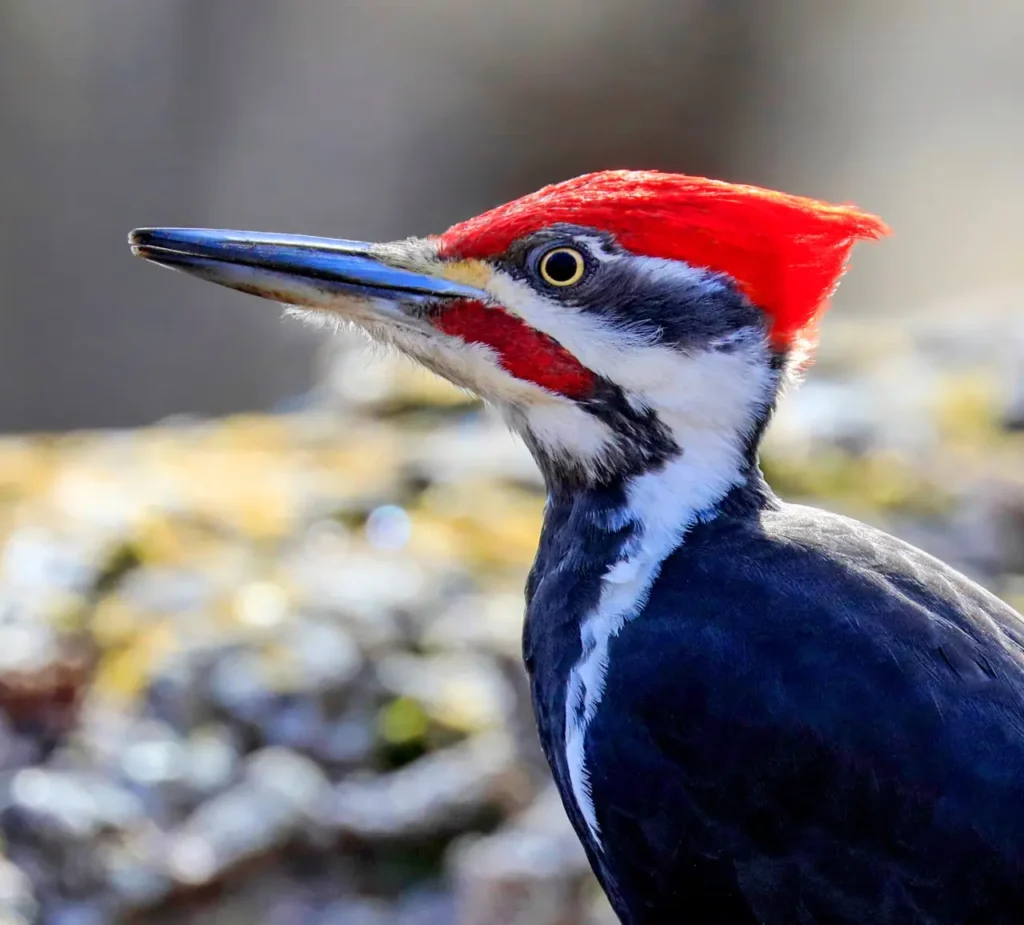
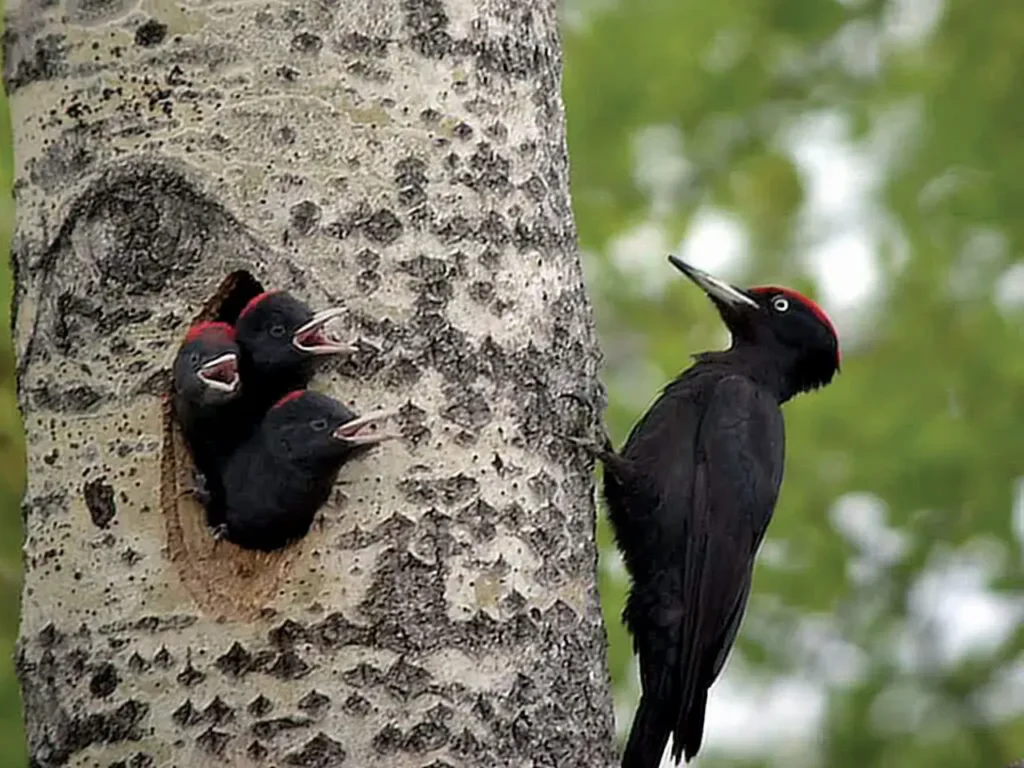
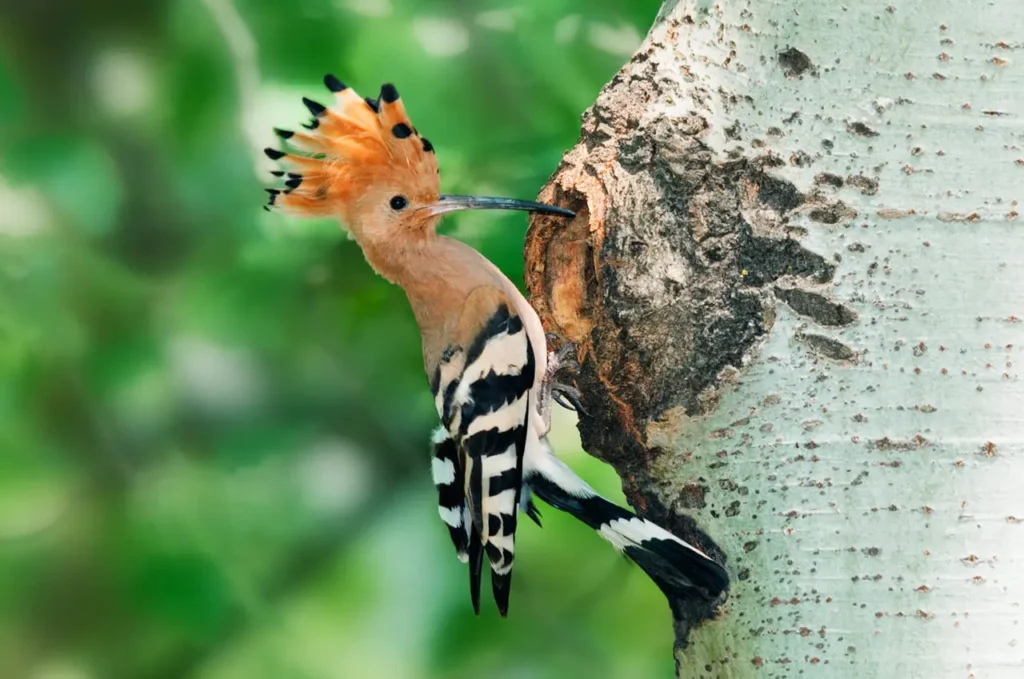
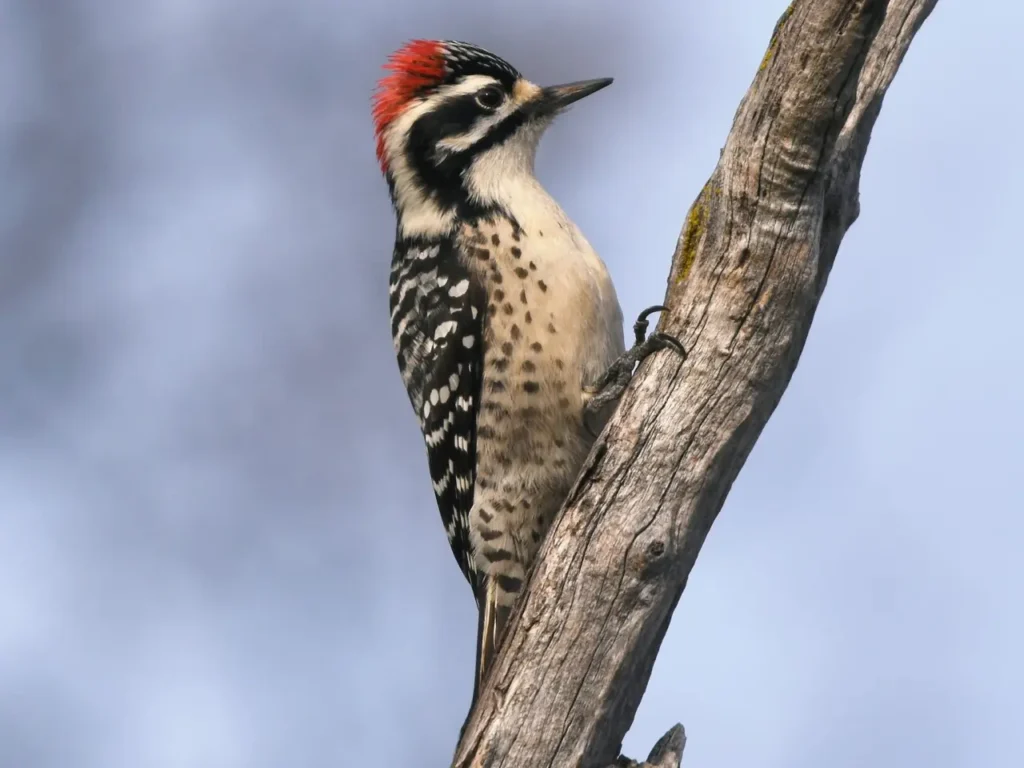
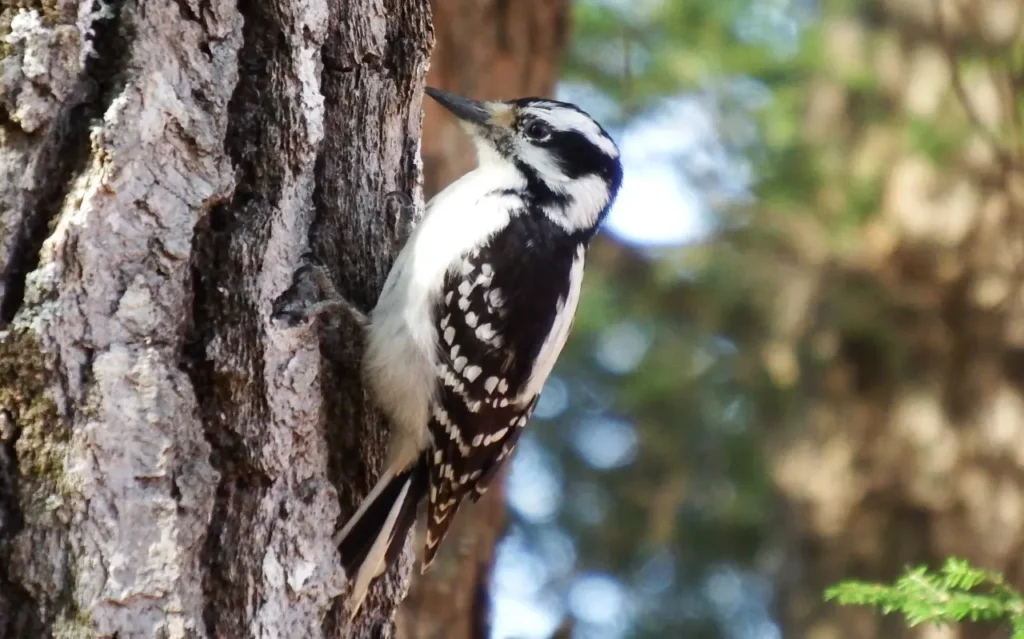
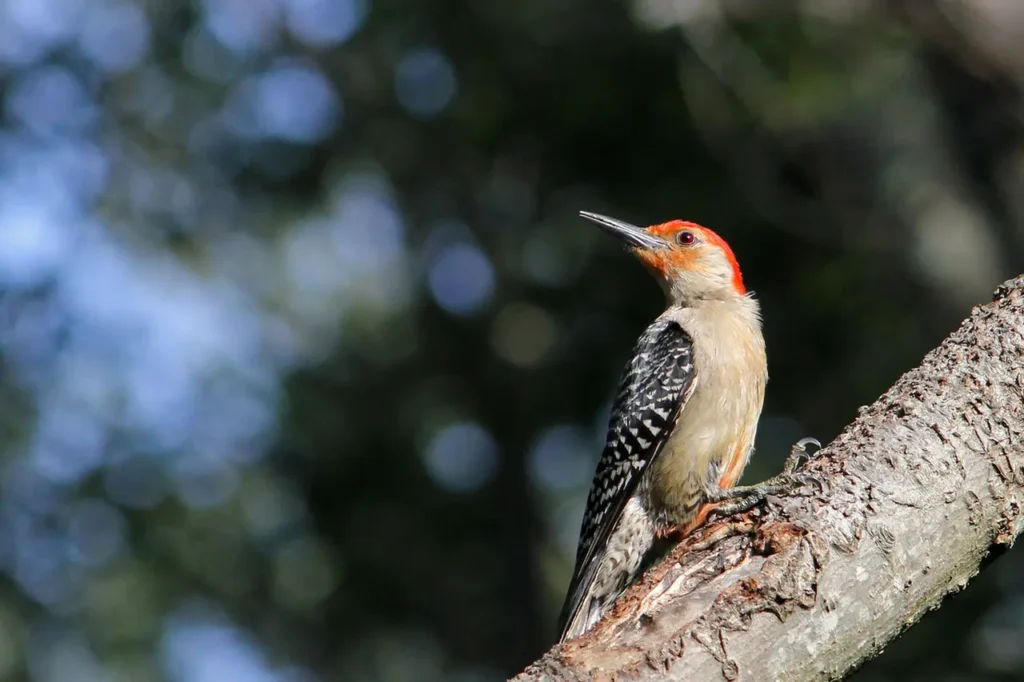
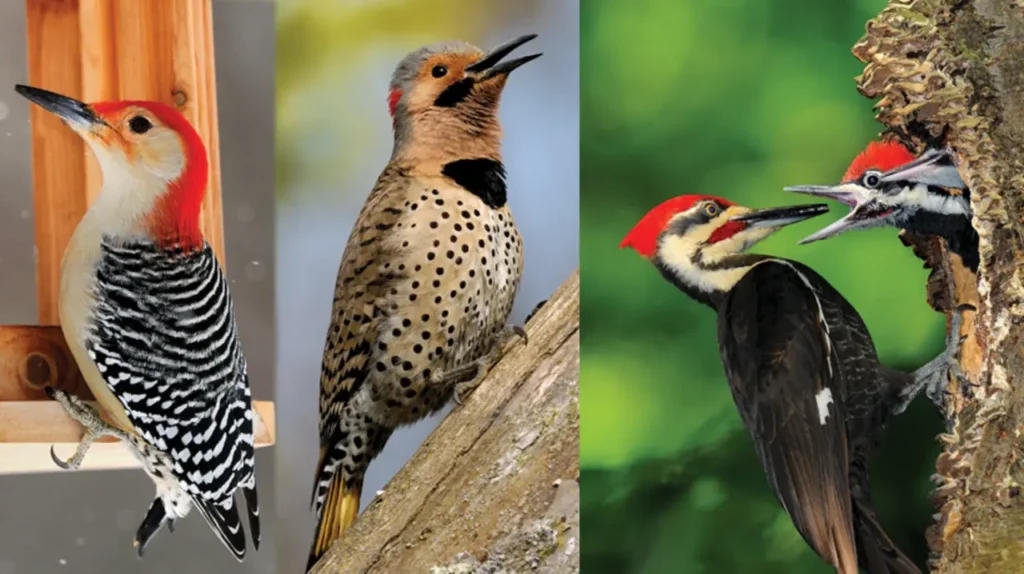
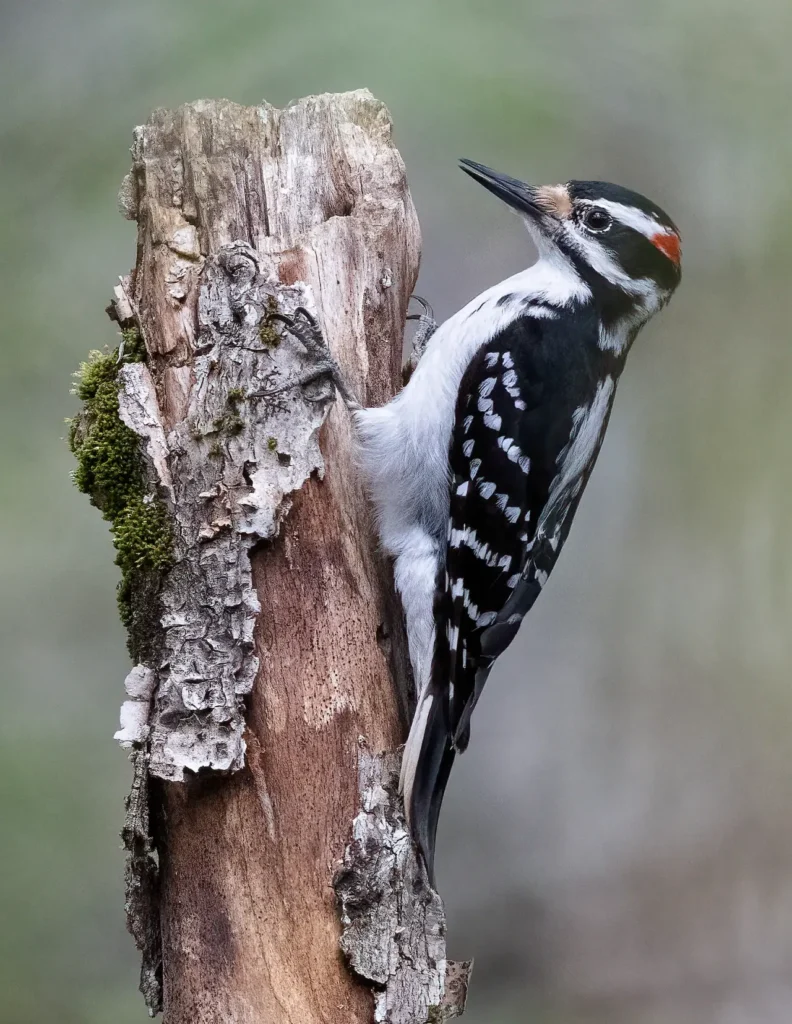
These are just a few examples of the diverse species of woodpeckers found around the world. Each woodpecker species has its own unique appearance, behaviors, and habitats, making them fascinating birds to observe and study.








